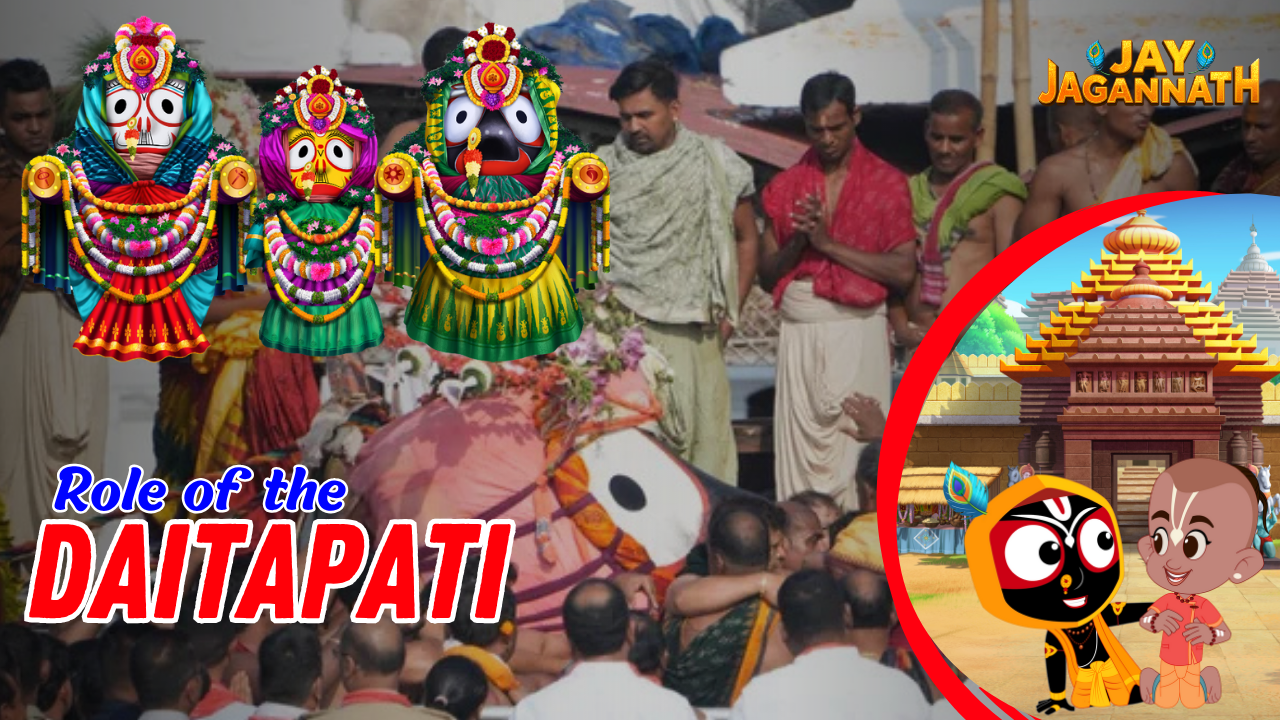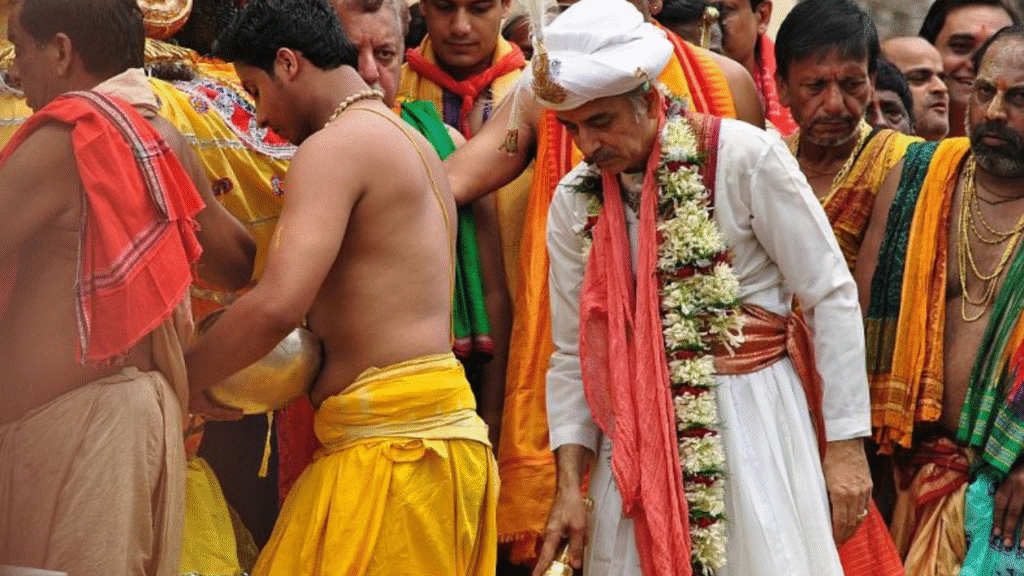
The Role of the Daitapati – Jagannath Most Mysterious Sevaks
The Role of the Daitapati, in the ancient town of Puri, where the sacred chants never cease and the sea breeze carries centuries of devotion, lies the majestic Jagannath Temple—a marvel of divine architecture and timeless rituals. Among the thousands of servitors who serve the Lord here, there exists one group so shrouded in mystery and spiritual importance that even the most learned scholars can only speculate about the depth of their role—the Daitapatis.
They are not just temple priests.
They are the kin of God.
The keepers of secrets.
And the custodians of rituals that defy human logic.
Who Are the Daitapatis?
The word Daita stems from the Sanskrit root meaning “beloved” or “kin”. The Daitapatis are believed to be the descendants of Vishwavasu, the Sabara tribal chief who worshipped the original form of Lord Jagannath—the Nila Madhava—before King Indradyumna built the present-day temple.
This sacred lineage, blending tribal spirituality with classical Hindu devotion, makes the Daitapatis a living bridge between the forest and the temple, between the primal and the divine. They embody the core Jagannath philosophy—inclusiveness, where even non-Brahmins are given the highest spiritual authority.

The Soul-Touching Relationship Between Daitapatis and the Deities
Unlike other servitors who adhere strictly to rituals and codes, the Daitapatis treat Lord Jagannath as their family, not symbolically, but emotionally and physically.
During the sacred fortnight of Anavasara—when Lord Jagannath is believed to fall ill after the grand bathing festival (Snana Yatra)—the Daitapatis are the only ones permitted to attend to His needs. They:
-
Prepare his herbal medicines (Dasamula),
-
Gently massage His wooden body with oils and pastes,
-
Fan him to keep cool,
-
And sing soft lullabies (Chandan Ghoda Gita) like a loving parent to a sick child.
It is a spiritual caregiving that transcends ritual and touches the divine with human affection.
The Mysterious Ritual of Nabakalebara
Every 12 to 19 years, a rare and sacred ritual called Nabakalebara takes place, during which the old wooden idols of Jagannath, Balabhadra, Subhadra, and Sudarshan are replaced with new ones.
But the mystery lies in a single act:
The transfer of the Brahma Padartha—a mysterious, immortal energy substance said to reside in the hearts of the old idols.
Only the Daitapatis are allowed to:
-
Identify the sacred Daru Brahma trees based on divine signs (like chakra marks, absence of birds’ nests, or snakes guarding the tree),
-
Carve the new idols in complete secrecy,
-
Perform the midnight Brahma transfer ritual, blindfolded, in a temple chamber without light, their hands wrapped in cloth, under strict silence.
No one outside the lineage has ever witnessed it.
No scripture details it.
No photograph has captured it.
It is believed that any outsider who dares to look dies instantly or mysteriously.
This is not mythology—it is accepted truth in Puri.
The Rath Yatra: A Time When Daitapatis Rule
During the world-famous Rath Yatra, when Lord Jagannath and His siblings travel to the Gundicha temple, it is not the Brahmins, but the Daitapatis who take charge of the deities. They:
-
Escort the Lord from His sanctum to the chariot (Pahandi Bije),
-
Assist in the majestic Chhera Pahara (ceremonial sweeping),
-
Guard the deities during their stay outside the temple,
-
And handle the secret rituals performed during their return (Bahuda Yatra).
For those few days, even the king, the Gajapati Maharaj, takes a step back. The Daitapatis become the sole caretakers of God on Earth.
Not Without Controversy
With great power comes great responsibility—and sometimes, great debate.
Over the years, the Daitapatis have been criticized for being too secretive or for alleged conflicts during rituals involving others. Some demand reforms, transparency, or more open access to Jagannath’s rituals.
But those who understand the Daitapatis deeply will tell you:
“Their secrecy is not ego—it is protection.”
Protection of ritual purity, of ancestral oaths, and of a spiritual legacy that cannot be explained by logic alone.
The Divine and the Tribal – Coexisting in Jagannath
The Daitapatis are a living testimony to Jagannath’s unique identity—a god who is tribal and royal, Vedic and folk, masculine and feminine, formless and with form.
They remind the world that God does not belong only to the elite or the literate, but also to those who sing with devotion, serve with love, and keep the flame of tradition alive—even if the world can’t fully understand it.
Final Thoughts: The Silent Protectors of Divine Mysteries
To this day, even modern technology has failed to demystify the rituals of the Daitapatis. No drone has captured the Brahma transfer. No camera has decoded the secrets of Anavasara. And no book has fully documented what they do behind the temple’s sealed doors.
Why?
Because some things are not meant to be captured.
They are meant to be felt, respected, and protected.
The Daitapatis are not just servitors.
They are living legends—the most intimate companions of the Lord of the Universe.


Leave a reply here
Your email address will not be published. Required fields are marked *